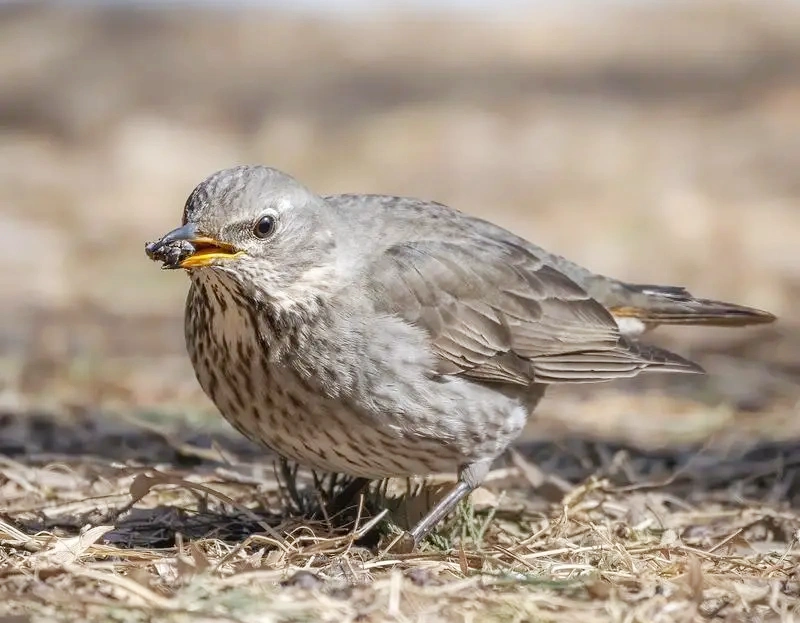Black-throated Thrush
The Black-throated Thrush (Turdus atrogularis), known as 黑颈鸫 (Hēi jǐng dōng) in Chinese, is a member of the Turdidae family. This thrush is noted for its striking black throat and overall appearance, making it a favorite among birdwatchers.
Physical Features:
- Size: Approximately 24-27 cm (9.4-10.6 inches) in length.
- Plumage: The male Black-throated Thrush is distinguished by its black throat and upper chest, which contrasts sharply with its grayish-brown upperparts and white underparts. The female is generally more subdued in coloration, with a grayish-brown throat and upper chest.
- Voice: Its song is a series of melodious and clear whistles, often repeated. The call is a distinctive “chack” sound.
Habits:
- Behavior: The Black-throated Thrush is migratory, breeding in the taiga and forest regions of Siberia and Central Asia. During winter, it migrates to South Asia and East Asia. It prefers open forests, woodland edges, and scrublands during migration and wintering.
- Diet: This thrush feeds on a diet of insects, worms, and other invertebrates, supplemented with fruits and berries. It forages on the ground or in low vegetation.
- Breeding: Nests are typically built in trees or shrubs, where the female lays several eggs. The breeding season occurs in spring and early summer.
Where to Watch in China and Yunnan:
- China:
- Northeastern China: The Black-throated Thrush is found in regions like Heilongjiang and Jilin during migration and winter.
- Central China: In provinces such as Sichuan and Shaanxi, the bird can be seen during migration.
- Eastern China: Areas like Jiangsu and Zhejiang provide suitable habitats during winter.
- Yunnan:
- Kunming: The bird can be observed in forested parks and surrounding areas of Kunming during migration and winter.
- Xishuangbanna: The subtropical forests of Xishuangbanna offer a good habitat for the Black-throated Thrush, especially in winter.
- Dali and Lijiang: These regions are also suitable for spotting the Black-throated Thrush during its migratory journey and winter stay.
Best Time for Birding Tours:
- Autumn (September to November): This period is ideal for observing the Black-throated Thrush as it migrates to its wintering grounds.
- Winter (December to February): In Yunnan and other parts of southern China, the bird is present in suitable habitats during the winter months.
- Spring (March to May): Spring is another excellent time for birdwatching, as the thrush prepares to migrate back to its breeding areas.
Birding Trips and Recommendations:
- Guided Birdwatching Tours: Participating in guided birdwatching tours can increase your chances of spotting the Black-throated Thrush. Guides with local knowledge can provide valuable assistance.
- Local Birdwatching Organizations: Contact local birding clubs or organizations in Kunming, Xishuangbanna, Dali, and Lijiang for up-to-date information on birdwatching trips and the best locations to find the Black-throated Thrush.
- Self-Guided Birdwatching: Use field guides and birding apps to help identify and locate the Black-throated Thrush. Plan your visits based on the best times to observe this species.
Additional Tips:
- Equipment: Bring high-quality binoculars and a camera with a telephoto lens to capture images of the Black-throated Thrush. A field guide specific to the region is also useful.
- Local Expertise: Engaging with local birdwatching groups or experts can enhance your birdwatching experience and provide deeper insights into the behavior and habitat of the Black-throated Thrush.











